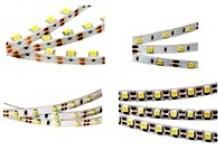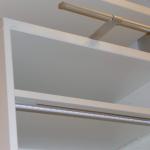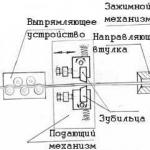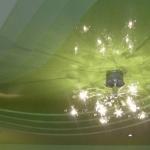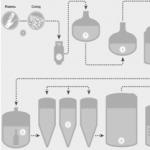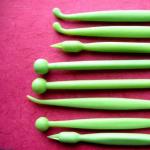Beautiful salvia bushes adorn flower beds not only in summer cottages, but also in city parks and squares, from summer to autumn. She feels great both on lawns and in pots. If you make a little effort in the spring, then in June the salvia will bloom its beautiful buds.
Sage vs Salvia - What's the Difference?
 Sage, another name for salvia
Sage, another name for salvia Salvia has another name - sage. The same medicinal sage, the tincture of which we used to gargle, and a beautifully flowering bush are two types of the same plant. In Europe, all types of salvia (Latin salvus - “to be healthy”) are called sage, in our country the division is accepted:

decorative bushes used in landscape design are called salvia;

a spicy medicinal plant used in medicine is called sage.
 Perennial salvia - the choice of many summer residents
Perennial salvia - the choice of many summer residents But an ornamental plant can also be different: some varieties live only a season, others are planted before winter and enjoy lush colors in the summer, others in a warm climate can grow and delight the eye for several years.
By nature, all salvia flowers are perennials, but they are not able to endure severe frosts, often freeze in winters with little snow, so most often the flower is grown as a one- or two-year-old.
All types of salvia flowers can be divided into three groups:
 American salvia is very sensitive to cold.
American salvia is very sensitive to cold. American - heat-loving plant varieties, as a rule, are annuals and grow only in a warm climate;
 Mediterranean salvia prefers a mild climate
Mediterranean salvia prefers a mild climate Mediterranean - varieties of medium winter hardiness. Plant bushes can survive not very severe winters, but during snowless and little snowy winters they often die;
 Winter-hardy varieties get along well in central Russia
Winter-hardy varieties get along well in central Russia winter-hardy varieties - they are grown in a temperate climate. A large group includes biennial varieties that are unpretentious in choosing a planting site and require little shelter for the winter.
There are a lot of varieties of salvia: more than 900. For decorative purposes, two types are most often used for landscape design:
shiny;
Sparkling.
The plant reaches a height of 25-80 centimeters, has different color options. For a two-year cultivation, planting salvia flowers for seedlings is carried out in the fall, and for the winter it is covered.
Annuals have a short lifespan, so salvia is often grown in seedlings, taking care of its planting from early spring. So with the end of spring frosts, seedlings can be planted in flower beds and rabatki.
Salvia in landscape design

Undemanding to special growing conditions, long flowering made the salvia flower a welcome guest in gardens, suburban areas or city parks. The bush blooms from June to late autumn, so the flower beds always look attractive. The variety of colors of the buds makes it possible to make various combinations of different varieties of salvia or combine it with other types of plants.
Tall salvia flowers are used as a background for shorter plants, which include some varieties of salvia itself. The bushes are not demanding on the neighborhood, do not grow and require special care and fertilizing, therefore, knowing how and when to sow salvia for seedlings, using simple planting methods, you can grow a beautiful plant that pleases the eye until late autumn.
When to sow salvia seedlings
Each plant requires a certain time for development: it takes about four months from the appearance of sprouts to flowering of salvia, so planting salvia flowers for seedlings with the aim of flowering already in early June, when it is already warm in the middle regions of Russia, should take place in February-March. Biennials are sown in autumn, before the first frosts have come.
Seed preparation

Salvia seeds need to be treated before planting to protect the plant from disease. To do this, take a 0.1% solution of potassium permanganate ("potassium permanganate"), keep the seeds in it, then wash them under running water and dry them on a cloth or paper napkin.
Important! Gardening stores sell granular salvia seeds. The shell in which they are enclosed protects the planting material from damage, so they do not need to be processed before planting.

Soil preparation
The main soil requirements for planting salvia flowers:
light;
loose;
pH level - 6.0 - 6.5.
It is best to buy ready-made soil mixture in the store, if this is not possible, you can prepare the nutrient mixture yourself. To do this, take:

2 parts of sod land;

2 parts of peat;

1 part coarse sand.

Before planting salvia flowers, about a week in advance, the soil must be prepared: sift it through a sieve, first through a coarse mesh, then through a fine one. So the soil is saturated with oxygen, becomes light and loose.

At the bottom of the seedling box, pour drainage about 1 centimeter high. Expanded clay, broken brick fragments, vermiculite can be used as drainage.

On top of about half the height of the box, pour a large soil mixture, to the very top, leaving about 2 centimeters from the top of the box free, finely sifted soil. Spill the soil with a hot solution of potassium permanganate.
Planting salvia flowers for seedlings is carried out as follows:

mix salvia seeds with calcined sand;

make deepenings in a box with the soil prepared as described above: rows at a distance of about 4-5 centimeters from each other;
sow the seeds, moisten the soil from above with water from a spray bottle.

For sowing granulated salvia seeds, not grooves are made in the soil, but pits 0.2-0.3 cm deep and with a distance of 3 * 3 cm between them. The granules are slightly deepened into the soil, then it is sprayed to moisten.

After planting salvia seeds, the boxes should be covered with glass or transparent plastic wrap, creating the effect of a greenhouse. The first sprouts will appear in 10-14 days, until this time you do not need to open the box.
How to care for salvia seedlings

Until the sprouts appear from the soil (granulated seeds germinate longer, so they are planted earlier), the soil must be moistened - from a spray bottle, but better - through a pan, pouring water into it. Excess water must be removed from the pan so that the roots of the seedlings do not rot.
Important! If you feel that more water has been absorbed into the soil than necessary, you can remove excess moisture by removing the film from the box and sprinkling fine sand or ash on top of the soil.
Important points when growing salvia seedlings:

The main point in obtaining strong, healthy seedlings is the proper organization of lighting and maintaining the optimum ambient temperature. It should be +25 degrees Celsius in the daytime, at least +20 degrees at night. In early spring, even on a sunny day, natural light will not be enough, so put out boxes with salvia seedlings during the daytime in the brightest and warmest place, providing heating and lighting with fluorescent lamps if necessary.

Gradually, salvia seedlings need to be hardened off: for this, remove the film from the boxes for a short time every day. Start with 10 minutes a day and gradually increase this time. It will be possible to remove the film when the seedlings acquire a fortress.
How to dive seedlings of salvia
The first picking of salvia seedlings is carried out when two to four true leaves appear on the plant. The first time they dive, transplanting plants into a deeper container, planting future bushes at a distance of at least 5 centimeters from each other. For the first time, the box must again be closed with a film.

A month later, salvia bushes can be dived a second time, providing a separate cup or container for each. They should be such that when planting in open ground, the roots cannot be damaged.
On sale you can find detachable pot designs designed specifically for seedlings. Containers should be at least 10-12 centimeters in diameter.
As a rule, after a proper transplant, the plant begins to grow quickly. After three weeks, salvia seedlings can be fed with a weak solution of complex mineral fertilizers.
Plant pinching

Another important step in growing salvia seedlings is pinching. It is produced when at least three or four pairs of leaves are formed on the bush. Pinching is done by breaking the growth point between the second and third pairs of leaves or above the third.
Until the plant is planted in a permanent "place of residence" in the garden, it must be hardened. To do this, it is enough to air the seedlings, starting from two to three minutes daily, gradually increasing the time. It is recommended to gradually reduce night temperatures, bringing them to +10 degrees before landing.
How to plant seedlings in open ground
The grown seedlings of salvia are planted in a flower bed or rabatka, when you can no longer be afraid of frost. In the central regions of Russia, this is the end of May or the beginning of June. In the south, salvia flowers are planted earlier. For landing, you need to choose a place protected from the wind, well lit by the sun. The soil, as for seedlings, should be light and loose.
For planting, holes are made at a distance of 20-30 centimeters from each other. They add:
1 kilogram of rotted humus;
100 grams of ash;
30 grams of superphosphate.

A salvia bush is carefully poured into the hole along with a clod of earth, slightly deepened and sprinkled with earth. After planting, you need to water the plants with warm settled water. In the early days, it is desirable to protect the flowers from direct sunlight. Regular watering will benefit: salvia flowers will soon delight the eye with lush flowering.
Caring for salvia flowers in the garden

In addition to watering, a perennial plant requires annual pruning, otherwise the shoots will stretch out too much and the bush will lose its attractiveness. When salvia fades, all flowers are removed, lignified shoots are pruned, leaving only a few young ones with buds and fresh leaves.
For the winter, the soil around the bush is mulched with spruce branches, compost, and dry leaves.

Salvia pests include thrips, whiteflies, aphids, slugs, and snails. So that they do not damage the plant and do not destroy it, treatment with biological and chemical protection agents, insecticides is required. If a spider mite is damaged, you will have to come to terms with the loss and destroy the diseased flower bushes. Slugs and snails can be caught using special traps.
The best way to protect a plant is prevention. Then, with proper planting, proper care, bright beautiful salvia flowers will delight you throughout the summer and autumn.
Drawing a conclusion, we can confidently conclude that in order to obtain amazing and beautiful flowers, the correct planting of salvia flowers for seedlings is very important initially.
Salvia has beautiful flowers, leaves and bush shape. She looks noble in the flower bed and in the garden. Consider how and when to plant salvia, how to care for seedlings and combine it in a flower bed with other plants. She is loved for a variety of colors, unpretentiousness, early and long flowering. Small flowers are collected in complex whorled spicate or paniculate inflorescences of red, white, pink, blue. New varieties make this plant more and more popular. Wild salvia (sage) has medicinal properties, contains essential oils and is used in cooking. Sadovaya is a source of aesthetic pleasure.
- 1 In the flowerbeds of parks and gardens, salvia sparkling or shiny is most often found. Bush height 20-80 cm (depending on the variety). Plants with large irregular bright red flowers in the form of a pyramid are known to everyone, although there are varieties with white, pink and purple buds that differ in the size of racemose inflorescences and flowering time. Compared to red salvia, sparkling white has a less dense inflorescence, purple - more dense pubescence, pink - a short flowering period.
- 2 Salvia Mealy - a plant 60-90 cm high with loose inflorescences 15-20 cm long, predominantly blue-blue in color, located on high shoots. The Anschulz variety has silvery white flowers. Drought tolerant.
- 3 Salvia red has straight densely pubescent stems, ovate leaves and loose inflorescences up to 30 cm long.
- 1 Plumosa. Its bright purple flowers are collected in short (20 cm), but very dense inflorescences, a bush up to 60 cm tall is decorative and atypical for this type of flowering.
- 2 Marcus. The height of the bushes is 20 cm, therefore it is used as a ground cover plant. Blue-violet flowers occupy almost the entire part of the stem.
- 3 East Frisland. Bush 60 cm high, strongly branching. Its special decorative effect is that dense inflorescences are located at the ends of the branches, and when flowering, the plant is completely covered with purple buds.
- seeds;
- dividing the bush;
- cuttings;
- air outlets.
Show all
seedling care
Most types of decorative salvia, although they are perennial, do not withstand frost and are grown as annual plants with a long period of development: 70-100 days pass from sowing seeds to flowering. When is salvia planted at home? If you can provide additional illumination for young sprouts, sow in the first decade of February. The last crops are done no later than March 1-5.
Seeds do not need pre-soaking or treatment with growth stimulants. Light nutrient soil is poured into a prepared container 5-8 cm high, disinfected with hot water and, without waiting for complete cooling, dry seeds are laid out at a distance of 1 to 3 cm, depending on whether you plan to dive seedlings. Salvia seeds are not very small, it is convenient to put them individually. From above they are sprinkled with soil with a layer of 2 mm, lightly tamped, moistened, covered with a film and put in a warm place (+23 ... 25 ° C). There is usually enough moisture in the soil before the seeds germinate and watering is not necessary, but if the soil is dry, spray it with a spray bottle. When drying already swollen seeds, there will be no sprouts.
Shoots usually appear in 10-15 days, they are placed on a sunny windowsill. During the day, seedlings should be illuminated for at least 13 hours. With a lack of light, the seedlings stretch out, the leaves turn pale. To increase the intensity of natural light, reflective surfaces are placed on the window sill with plants, such as frames with stretched foil.
The main thing when growing seedlings is to get strong roots, so the seedlings dive. If drainage holes are not made in the sowing containers, then they must be made in individual pots to avoid root rot. Salvia is very afraid of moisture stagnation. They start picking when 2-3 true leaves appear on the seedlings, they deepen the seedlings to the cotyledon leaves, this contributes to the formation of new roots.
Some flower growers prefer to continue growing salvia until planting in the ground in boxes or boxes. If salvia does not dive, seedling care consists in providing nutrition, it is necessary to pour the soil as high as possible. Other flower growers carry out this procedure twice: in the phase of 2-3 leaves, they dive into large boxes, and after 3 weeks - into pots.
The necessary conditions
Salvia grows well in any potting mix. You can make soil for it yourself by mixing peat, sand and earth from the forest (1: 1: 1). The plant loves moderately moist soil. The optimum temperature after picking is +15...+18°С, in April it is lowered to +10°С for hardening. When 3-4 true leaves appear, pinching is carried out, which stimulates tillering. Plants are fed if there is any doubt that the bushes have enough nutrition. Home-grown bushes should have small buds. When they appear, seedlings must be fed with any complex flower fertilizer.

It is undesirable if flowers appear on the seedlings on the windowsill, salvia will not be able to save them during transplantation.
The flower you like can be propagated at home vegetatively: take a cutting from a bush, put it in water. After it takes root (after 10-15 days), plant in a pot as a houseplant. In winter, it is necessary to withstand a temperature of +8 ... + 12 ° С, in spring it can be used as a mother liquor. For reproduction by this method, any salvia is suitable, since its natural life form is perennial. A bush grown from a cutting must be pinched.
Landing in the ground
Salvia is planted in a flower bed in May, if, according to weather forecasts, no return frosts are expected in the next 10 days. During this time, the plants will have time to take root, and lowering the temperature will not be dangerous for them. At night, you can cover the plantings with lutrasil. The plant loves the sun, calcareous permeable soil. Of all the species, only salvia sticky can withstand partial shade. It should be noted that on too nutritious soil, the plant forms bushes with large leaves and a minimum number of flowers. This often occurs from an excess of nitrogen in the soil, to which salvia is very sensitive. To restore normal development, 10 g of superphosphate is poured into 2 liters of hot water and the bushes are sprayed in a day.

Transshipment of salvia, planting and care are not difficult. At what distance to plant seedlings, each grower decides for himself: someone prefers separately growing bushes, others strive to get a dense carpet line of flowers. Dense landings are not afraid of the wind. Most often, they maintain a distance of 25-30 cm. A handful of humus and, if necessary, sand are poured into each hole. It is desirable to mulch the planted seedlings. If, after planting, an unexpected drop in night temperature occurs, and the seedlings are frozen, they will have to be cut, as a result, the appearance of flowers will occur a month later.
Further care for salvia does not differ from caring for other flowers and consists of loosening the soil, fertilizing. The plant needs watering in dry weather before the flowers appear. Diseases practically do not affect her. Whiteflies, thrips, aphids can harm. Snails and slugs eat the leaves. The best way to control pests is to use insecticides.
Salvia blooms from June until frost, forms a fruit of 4 nuts. Seeds remain viable for 5 years. If you have a varietal flower (not a hybrid), they can be harvested and sown the next year.

annual plants
As already mentioned, mainly in our climate, the tropical perennial salvia is grown as an annual ornamental plant. Various types of salvia differ in biological characteristics, the description of the most popular of them is given below:

Salvia motley stands out among the numerous species. It is original with bright leaves-bracts, which are painted pink with green veins, giving the plant a decorative effect before the appearance of flowers and the entire growing season. However, this species is not used in cultivation due to the need to use supports, without which the plant lodging.
perennial salvia
According to biological features, salvia is distinguished as annual and perennial. The latter are not afraid of frosts down to -18 ° С. Oak salvia is grown as a perennial plant and is considered the most frost-resistant and unpretentious of all species. The height of its stems reaches 60 cm, inflorescences - up to 40 cm. Depending on the variety, the flowers are pink, purple or lilac-purple bloom from June to mid-September. The most common varieties of oak salvia:

The names of the varieties: Pink Glade, Lilac Glade, Lilac Queen - they themselves speak about the color of their flowers. A bush of salvia perennial for better branching and the formation of new shoots must be formed. Pruning is done in autumn. Salvia crosses easily, so different varieties are best grown in different parts of the garden.
How to grow oak salvia? Varieties of perennial sage are propagated in the following ways:
In addition to the oak forest, Sylvia meadow, nutmeg, and lush are cold-resistant.

Combined with other plants
Salvia is usually planted in a flower bed after daisies, forget-me-nots and other spring flowers. It is often planted with bulbs: when they fade, the overgrown sage will cover them. For flower beds, plants with a long flowering period are usually chosen, which do not lose their decorative effect for a long time. Salvia is one of them. The formation and thickening of its branches occurs quickly. The classic pairing is brilliant red salvia and petunia, considered by many to be outdated. But try to pick up colors in a new way with a gradual transition from one color to another, for example, from red to pink. The combination of pink salvia with pale blue lobelia looks romantic.
When creating a flower bed, you need to think in advance how the plants will be combined in color and height. Considering that warm colors in combination with cold ones create a harmonious contrast in flower beds, red salvia is often planted with ageratum, cineraria. Red flowers look good next to green spaces. If you plant blue salvia with orange, they will look even brighter. In a small garden, bright salvias are planted in small groups; plants of blue shades in combination with white look more harmonious and easier.
Most often, salvia is placed in the center of the flower bed, framing with lower annuals that cover the lower part of the bushes. Loose inflorescences of some species do not form bright colorful spots, but fit perfectly into any landscape.
Often, salvia is planted in pots and decorated with verandas, gazebos, balconies and other recreational areas.
Salvia(Sage) - a plant from the Lamiaceae family, perennial, decorative color, used in medicine, as contains essential oils.
Plants are annual and perennial. According to flower growers, oak sage is considered very beautiful.
Salvia counts approx. 850 subspecies and is distributed from Europe to America.
In contact with
Classmates
 The stem of Salvia is tetrahedral, the flowers are two-lipped, tubular, deep red, flowering begins in June and ends at the time of autumn frosts. Breeders have bred varieties with a stem height of 25-80 cm, and colors that are different from red: Burgundy, pink, white, orange, lilac. Next, a description of everything about the flower , photos of flowers, seedlings, when to plant seedlings in the ground. The amazing Salvia plant, videos and photo collages with these beautiful plants are delightful.
The stem of Salvia is tetrahedral, the flowers are two-lipped, tubular, deep red, flowering begins in June and ends at the time of autumn frosts. Breeders have bred varieties with a stem height of 25-80 cm, and colors that are different from red: Burgundy, pink, white, orange, lilac. Next, a description of everything about the flower , photos of flowers, seedlings, when to plant seedlings in the ground. The amazing Salvia plant, videos and photo collages with these beautiful plants are delightful.
The most popular varieties are Salvia sparkling (Salvia splendens), which is an ornamental species, and (Salvia officinalis), used in medicine. Each of them has its own purpose:
- Brilliant salvia is grown to decorate flower beds, and rock gardens are decorated with plants in pots. These flowers look great with cineraria, marigolds, lobelia.
- Medicinal sage is widely used in medicine; various tinctures and extracts are made from the raw materials obtained.

Leaves should be harvested before or after flowering. Plants have a pleasant aroma, so overdose should be avoided.
"Salvia divinorum - considered a plant of soothsayers, and can cause hallucinations"
Photos of Salvia varieties
sowing seed
Salvia begins to bloom no earlier than three months after sowing. Therefore, the optimal time for sowing seeds is February or March. When growing perennial salvia, the time for sowing varies. The seed is sown in autumn, before the onset of frost. Annuals and perennials do not have differences in care, and do not require special attention. It is possible to purchase a flower seed either in a store, or to collect it yourself from home specimens.




Seed preparation
Before sowing the seed is needed treat with a solution of potassium permanganate 0.1%. After that, rinse the material for sowing under running water, then put it on a paper or cloth towel, and wait until it dries completely. Store-bought granulated seed does not require pre-treatment.
A protective shell with nutritional properties protects the seeds from damage and simplifies the planting process. Sowing of granular seeds should be done earlier than usual, the protective layer slightly delays the germination of seeds.
Salvia flower - planting and care
 it is best to produce in light soil saturated with air and moisture, it is desirable to fertilize with nutrients.
it is best to produce in light soil saturated with air and moisture, it is desirable to fertilize with nutrients.
Ready soil is sold in specialized stores, or it is made at home. Prepare a mixture of earth, and it is advisable to let stand for a week before sowing seeds in it.
Recipe for preparing soil at home:
- Two parts of soddy soil.
- One part sifted pitch.
- Two pieces of peat.
With increased acidity of the soil, a little lime can be added to the mixture (no more than 5%). After that, the mixture must be thoroughly mixed and sieved. Expanded clay is poured into the bottom of the box, 1.5 cm thick - this will provide drainage. Then a large fraction of the mixture is poured, on top of it is a finer sifted mixture.
After that, the soil must be disinfected by watering it with a hot solution of potassium permanganate. The box with the prepared soil must be placed in the pallet, and the soil leveled. The distance from the top edge of the box to the ground should be more than 2 cm, sow the seeds in fine-grained soil. Rows from each other should be at a distance of 3 to 5 cm.
Granular seeds should be sown in a square-nest manner, 3 cm apart. Depth of immersion of seeds is 2 mm. Spray the top layer of the earth with a spray bottle. Cover the box with foil to create a greenhouse effect.
 Sage seedlings germinate in a week and a half, but in some cases in two (it all depends on the seeds and microflora). Granulated seeds can germinate and up to 3 weeks. The earth should not be allowed to dry out, but it should not be flooded either. Watering is done in two ways: either through a pallet, or by spraying from a spray bottle. Drainage promotes the flow of moisture to the plants and retains moisture.
Sage seedlings germinate in a week and a half, but in some cases in two (it all depends on the seeds and microflora). Granulated seeds can germinate and up to 3 weeks. The earth should not be allowed to dry out, but it should not be flooded either. Watering is done in two ways: either through a pallet, or by spraying from a spray bottle. Drainage promotes the flow of moisture to the plants and retains moisture.
Excess moisture harms the condition of the seedlings, and will certainly lead to rotting of the roots. In this case, the film must be removed and sprinkled with dry sand or ash on the ground. Hatched seedlings need to be provided with enough light. Additional lighting can be arranged using a fluorescent lamp.
The length of the light period for seedlings should be approximately 12 hours
During the night, the temperature should be around 20˚C, during daylight hours around 25˚C. Around the sprouts, as they grow, you need to pour the earth. The sprouts must not be allowed to fall. Protect the leaves of seedlings from falling on them with drops of water.
Proper use of light and temperature conditions will grow healthy seedlings. Sprouts can be hardened by removing the film for a certain time, immediately for 10 minutes, later for 15, and so on until it is completely removed. The hardening procedure can only be applied to already strengthened sprouts.
Landing Salvia in open ground
Salvia will feel comfortable in light sandy soil, but rich in lime, humus, and well permeable to moisture. All types of Salvia love the sun, so the site should not be shaded, only sticky Salvia can grow in areas with shade. As soon as the night frosts have receded, and the spring sun has warmed the earth, Salvia can be planted.
How to plant Salvia?
Planting Salvia and caring for it can be done even by gardeners with little experience, and planting hardened seedlings will seem like a cakewalk. Dig holes at a distance of 25-30 cm from one another, pour 1 handful of humus into them, and transplant the flowers from the pot.
Salvia growing process and care
The Internet is full of videos describing what and how to do, but it’s easy to understand - caring for Salvia is no different from caring for any garden plant, fertilizing the soil, watering, weeding as needed - these are all necessary actions. It is necessary to water only after the complete drying of the earth from the last watering, exclusively in the evening, moisture stagnation in the roots should not be allowed. After watering, it is necessary to loosen the soil, and get rid of weeds. It is necessary to feed at least twice: initially seedlings, the second time during the formation of the peduncle.
Perennial Salvia
Significantly more trouble than a one-year or two-year-old, it will deliver, it additionally needs pruning to give shape. Trimming will not allow the stems to stretch, and promotes bushing of young shoots. When the flowering of perennial Salvia ends, wilted flowers must be removed, before the start of the next growing season, old shoots must be cut off on the bushes, leaving 2-3 cm along with young buds.
 The Salvia plant is not afraid of fungal diseases. Insects remain the only and main problem for the plant: aphids, thrips, whiteflies, spider mites, snails and slugs. These insects cause great harm, and can lead to the death of the plant.
The Salvia plant is not afraid of fungal diseases. Insects remain the only and main problem for the plant: aphids, thrips, whiteflies, spider mites, snails and slugs. These insects cause great harm, and can lead to the death of the plant.
Whiteflies easily move to flowers if the planting was carried out near vegetables. They destroy the leaves and leave the plant to wither, sucking the juice out of it. The whitefly is able to cover large areas in a short time.
Without suitable chemical treatment, the flowers die.
If the plants appeared aphid, you need to promptly process it with an appropriate solution. Aphids in a short time can multiply to destructive proportions, and destroy a huge area of sage plantings.
Thrips are very difficult to see, they are almost microscopic in size. If the leaves begin to curl and dry out, this is a sign of the appearance. Thrips can be killed with insecticides. Plants affected by spider mites must be removed and burned at the stake.
Snails and the like love to eat young shoots of leaves. Snails and slugs crawl up to the plant on the ground, the bark of a pine tree, or any other tree, scattered under the plant, will help get rid of these pests. Slugs can be removed by hand.
The best protection is prevention. Prevention should be carried out periodically, weeds and diseased plants should be removed in time. Spray with tobacco decoction mixed with liquid soap (4 grams of soap per 1 liter of decoction).
Flowering is over, what to do next?
The beginning of June pleases with the flowering of Salvia, and can continue until the autumn frosts. Some varieties may bloom twice a year. The Forest Salvia, fully trimmed after flowering and well nourished, bursts into new color at the end of summer. If Salvia has completely faded, you need to prune and mulch the roots. Treat growing points with garden compost, so the plant will survive the winter without loads.
What can be summed up?
These incredibly beautiful flowers will decorate every garden or flower bed. Behind this beauty is the time and effort spent on growing seedlings. Growing seedlings makes future plants strong and hardy, capable of producing healthy seeds in the future. Healthy cultivation will only be with proper care and compliance with certain rules. Proper preparation before growing seedlings is important, this factor determines future offspring.
Salvia brilliant - a tropical perennial, grown in our latitudes in an annual culture. Like all heat-loving letniki with a long development period (100-120 days pass from sowing to flowering), she spends half her life in a seedling pot and takes her place in the flower beds late: closer to mid-June, or rather, after the 10th, when the threat of night frosts has passed.
Sow in boxes or bowls to a depth of 3-5 mm. The crops are kept in a warm place (+ 25 ° C), moistened with a spray bottle, and so that the soil does not dry out too quickly, you can cover them with paper. Seedlings should appear in about 2 weeks.
Do not forget that we will be planting seedlings in a flower bed quite late - there is a high risk that the plants will not have time to get stronger when they are overtaken by drought and heat. Therefore, it is desirable to prepare planting material with a well-developed root system, which will allow it to quickly take root. For this, two picks are carried out. 
The first - when 2-3 true leaves appear - in a seedling box. The plant dives with an interval of 5 cm, deepening to the cotyledon leaves. The second pick is carried out 3 weeks after the first - in separate pots. For salvia, it is advisable to choose larger pots: not 9 cm in diameter, as usual, but 10-12 cm. Above the 3-4th pair of leaves, the seedlings are pinched to get more lush bushes.
Problems and Solutions
Salvia does not rise for a long time- most likely, you allowed the already swollen seeds to dry out, which is not surprising at the high temperature required for germination. In this case, it is better to reseed it - if there are seedlings, then, most likely, they are weak and unfriendly. In order not to repeat the mistakes, sow, but be careful: in this case, you cannot delay with the first pick, since the roots of the seedlings, fused in the hydrogel, will be difficult to disassemble.
Seedlings can't drop their "helmets"- seed coats. Apparently, the sowing depth turned out to be insufficient or the energy of seed germination is low due to their long or initial low quality. Moisten the seedlings with water from a sprayer and carefully remove the "helmets" by prying them off with a toothpick. Feed with any fertilizer for seedlings, which, in addition to nitrogen, phosphorus and potassium, includes magnesium, and even better, a complex of trace elements, including magnesium.
It doesn't bloom for a long time. Stretched stems and pale leaves indicate a lack of light. Salvia does not like even light shade, many varieties in such conditions delay flowering or do not bloom at all. In the first half of summer, you can still try to transplant the bushes to a more suitable place. If the leaves are greasy, dark green, and there are few or no inflorescences, it means that the plant is “fattening” and an excess of nitrogen in the soil interferes with flowering (salvia is very sensitive to this). Try to correct the situation by feeding it: 50 g of simple superphosphate is poured into 10 liters of hot water, insisted for a day, stirring several times, then filtered and sprayed on the plants.
The salvia variety you like can be preserved by propagating vegetatively. In the summer, take cuttings from it (they take root well even in water) and keep it in the winter on the south window as a houseplant at a temperature of 8-12 ° C. Pinch for better tillering. In March, the plant can be used as a mother liquor.


